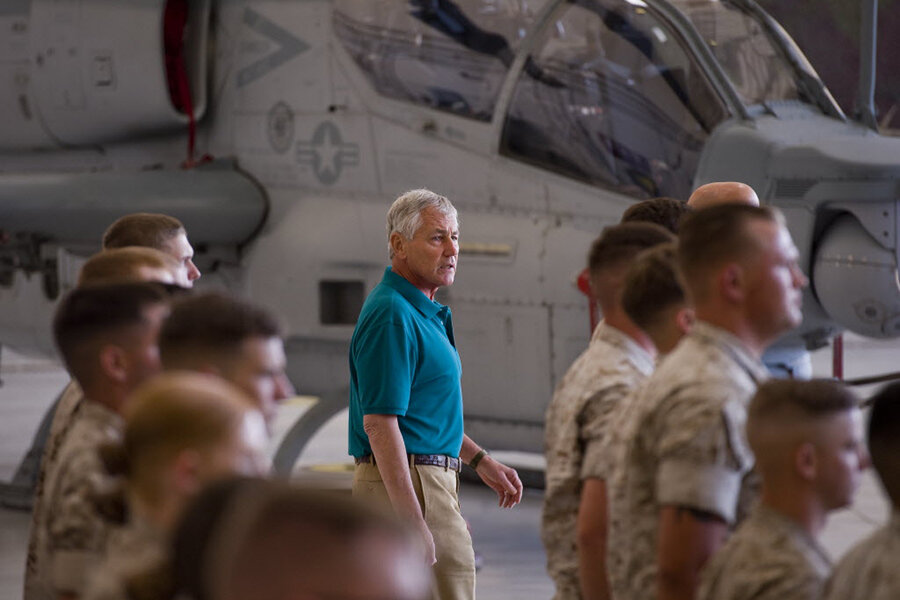US sending troops to assess Iraq crisis: why more may be needed
| Washington
President Obama has green-lighted the deployment of an additional 130 US troops – made of up Marines and Special Operations Forces – to Iraq.
That brings to over 1,000 the number of US military personnel now on the ground in the country, more than 2-1/2 years after America officially ended its war there in December, 2011.
These US troops are not there to fight, insist Pentagon officials, who hasten to add that the influx of troops is also temporary.
More US service members have been sent to northern Iraq “to assess the scope of the humanitarian mission,” a senior defense official explained. “These forces will not be engaged in a combat role.”
Rather, these forces are being sent there “to assess the scope of the humanitarian mission and develop additional humanitarian assistance operations beyond the current airdrop effort in support of displaced Iraqi civilians trapped on Sinjar Mountain by the Islamic State of Iraq and the Levant,” now known as the Islamic State, or IS.
These humanitarian operations have been considerable, with US military planes delivering some 100,000 meals-ready-to-eat and more than 27,000 gallons of drinking water since last week to the displaced Yazidis, an ethno-religious group that IS has vowed must convert to Islam or be wiped out.
But Pentagon officials are increasingly indicating that food and water alone may not be enough, and adding that the US military may need to do more – including sending ground troops – to accomplish the president’s humanitarian goals.
And so the 130 additional US troops announced by the Pentagon Wednesday will be looking into how to evacuate what military officials estimate may be thousands of Yazidis still trapped on the side of the mountain, which is notably lacking in shade.
This may involve creating a humanitarian corridor, which in turn could require ground troops to help facilitate safe passage for the displaced.
At the same time, the US military is flying some 60 missions a day, many of which involve air strikes to help give the Kurdish security forces of northern Iraq a reprieve and an opportunity to fortify their defensive positions in the face of IS attacks.
The problem is that there is only so much US airstrikes – and even humanitarian assistance – can do, senior US military officials say.
“We can drop supplies, but it’s not enough when you have people stranded with no trees or any kind of shade,” one military official told The New York Times.
Lt. Gen. William Mayville, the Pentagon’s director of operations, was clear about this in blunt remarks at a briefing Monday, when he noted that “in the immediate areas where we have focused our strikes, we’ve had a very temporary effect.”
And IS would no doubt respond, he warned. “What I expect [IS] to do is look for other things to do, to pick up and move elsewhere,” Mayville added. “So I in no way want to suggest that we have effectively contained or that we are somehow breaking the momentum of the threat.”






